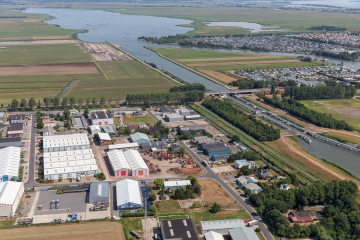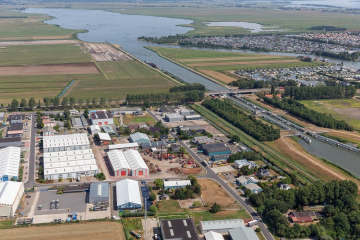Technological advances often come with mixed rewards. Plastics have life-saving applications but are also a pollutant, despite recycling efforts. Gas-powered vehicles have changed our lives for the better, but carbon emissions contribute to climate change. Per- and poly-fluoroalkyl substances (PFAS) are used in a wide range of beneficial products and processes but regulations and bans have been gaining traction.
It has become increasingly clear that PFAS pose significant dangers to health and the environment. Industries are scrambling to prepare but it can be incredibly difficult to filter out the hype and determine where your business should be.
Here’s what you should know about PFAS regulations and where they currently stand.
What Are PFAS (Per- and Poly-Fluoroalkyl Substances)?
Commonly known as “forever chemicals,” PFAS make up a class of over 7,000 humanmade compounds. Since their creation in the 1930s, PFAS have been used in an untold number of products and commercial applications including food packaging, clothing, and furniture. PFAS are used in coatings and products to resist heat, oil, grease, and water such as Teflon (Dupont) and Scotchgard (3M). Aqueous Film Forming Foam (AFFF) is a firefighting foam that contains PFAS and is highly effective at putting out high hazard flammable liquid fires.
PFAS can be incredibly useful but unfortunately, there is mounting evidence of environmental and health consequences. Their resistance to breaking down means they persist in the environment and build up in the bodies of animals and humans. PFAS in drinking water and food packaging are of particular and immediate concern.
PFAS Regulation: Changes Are Mounting
Because PFAS are so prevalent and widespread, even if legislation hasn’t hit your particular state yet, it likely will — and perhaps sooner than you’d expect.
Caron Koll, a consultant at Antea Group and PFAS expert, predicted in May 2021 that we may be as little as a year away from PFAS receiving ‘Maximum Contaminant Level’ and ‘Hazardous Substance’ designation from the EPA, which will swiftly strengthen compliance mechanisms. Toxic Release Inventory (TRI) reporting requirements are already here and making this a more pressing concern, creating transparency, and heightening the pressure from a brand safety standpoint.
The public is putting pressure on lawmakers to further regulate the use of PFAS and they are listening.
State and Federal Regulations
State Level
Numerous states have passed or proposed legislation that regulates and/or bans PFAS in a wide range of applications. States with enforceable drinking water standards (i.e. Maximum Contaminant Levels (MCLs)) include MA, MI, NH, NJ, NY, VT, and ME; and states with proposed MCL standards include AZ, IA, KY, and RI. Several states (CA, MA, MI, NH, NJ, NY, VT, and WI) have particularly ambitious PFAS regulations pending or in place. Maine and Connecticut have recently joined that list with new PFAS regulations as of July 2021.
Connecticut is regulating PFAS content in food packaging and the use of AFFF to fight fires.
- Effective October 1, 2021, PFAS in food packaging is banned and is to be phased out by 2023.
- Effective October 1, 2021, the use of AFFF in firefighting and training is banned except in cases where an alternative is not available.
Maine has passed the world’s first ban on products with PFAS. The law makes concessions when alternatives for PFAS aren’t available. (Although it still won’t go into effect for several years.)
- Effective January 1, 2023, the sale of new carpets or rugs with intentionally added PFAS is banned.
- Effective January 1, 2030, the sale of any product with intentionally added PFAS is banned except in cases where rulings are made that use of PFAS is unavoidable.
Federal Level
The Biden administration has adopted climate change and reduction of environmental contaminants as a focus of the administration and is awaiting Senate approval of the PFAS Action Act of 2021 after the House passed it in July 2021. The PFAS Action Act of 2021 calls for eighteen significant regulatory actions related to PFAS, including:
- EPA to set drinking water standards for two PFAS compounds — Perfluorooctanoic acid (PFOA) and Perfluorooctanesulfonic acid (PFOS) — within two years.
- Designate PFOA as a “hazardous substance” under CERCLA (Comprehensive Environmental Response, Compensation, and Liability Act — otherwise known as Superfund) within one year.
- Require the EPA to determine if all PFAS should be classified as “hazardous substances” under CERCLA within five years.
- Require testing of all PFAS for toxicity to human health under the Toxic Substances Control Act (TSCA).
- Require the EPA to issue drinking water standards under the Safe Drinking Water Act (SDWA) for at least PFOA and PFOS (although the bill calls for standards for all PFAS) within two years.
- Require the EPA to designate PFOA and PFOS as “hazardous air pollutants” pursuant to the Clean Air Act within six months.
- Create labeling requirements for products to signify that they are or are not PFAS-free.
- Create effluent regulations under the Water Pollution Control Act.
- Prohibit unsafe waste incineration of PFAS 6 months after the date of enactment.
Treatment Technology and the Impact of PFAS
The buzz around PFAS can be confusing and not just from a regulatory perspective. It isn’t always clear how to test for the chemicals, what harm they actually do, and the best treatment technologies to remove or treat them.
Treatment Technologies
Some water treatment vendors are proposing treatment technologies with minimal scientific basis or evidence of efficacy. However, there are tested and vetted treatment technologies available now. The EPA identified the following effective technologies to remove PFAS from drinking water.
- Granular Activated Carbon (GAC) — Chemicals like PFAS stick to the small particles of carbon as the water passes through.
- Powdered Activated Carbon (PAC) — The carbon is powdered and is added to the water. The chemicals then stick to the powdered carbon as the water passes through.
- Ion Exchange Resins — Small beads (called resins) are made of hydrocarbons that work like magnets. The chemicals stick to the beads and are removed as the water passes through.
- Nanofiltration and reverse osmosis — A process where water is pushed through a membrane with small pores. The membrane acts like a wall that can stop chemicals and particles from passing into drinking water.
Impact of PFAS
There is a large body of scientific research that outlines the harmful effects of PFAS, but there still is much we don’t know. Confusion exists about how PFAS persist and the best ways to offset the damage. These knowledge gaps can lead to premature or ineffective responses and can contribute to a “wait and see” attitude.
While we don’t know everything about PFAS, what we do know is that regulation of PFAS is a “when,” not an “if.” PFAS are entrenched in so many industries that it is safe to say every business should know where they stand in regard to their use of PFAS. Even if it is too soon to know what your business needs to do about PFAS in the long term, you can learn more now about where to start.
PFAS Response: Don’t Panic, Plan
It’s time to determine the role PFAS play in your industry and in your business. Even if regulations haven’t changed for your business, state, or region, it’s clear that they will. There’s no need to panic; tools such as PFAS Screening, give a clear view of your current situation and establish next steps. Proactive measures like PFAS screening and preparations for future regulations will allow your business to transition smoothly.
Reach out to Antea Group for more information about our PFAS Management Support services and get your business ready for the changes to come.
PFAS Management SupportWant more news and insights like this?
Sign up for our monthly e-newsletter, The New Leaf. Our goal is to keep you updated, educated, and even a bit entertained as it relates to all things EHS and sustainability.
Get e-NewsletterHave any questions?
Contact us to discuss your environment, health, safety, and sustainability needs today.










